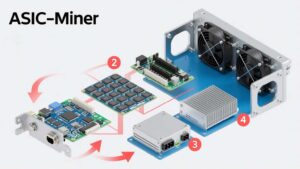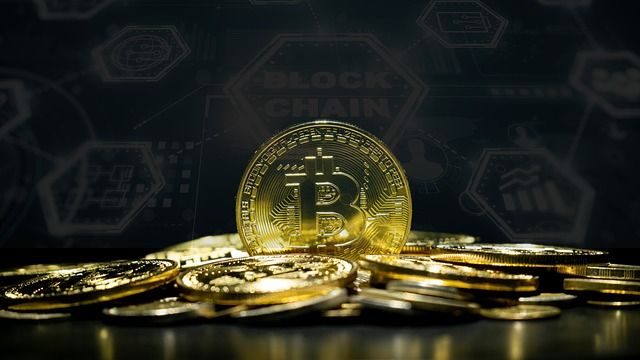
Have you ever wondered how two complex concepts like Ordinals and Fractal Bitcoin can be connected? Can one enhance the other in a way that benefits the entire Bitcoin ecosystem? Or are they destined to remain separate realms of innovation? Many in the cryptocurrency space are curious about how these two concepts might intersect, and whether bridging them could offer a new perspective on Bitcoin’s evolution.
How to bridge ordinals to fractal bitcoin? The process starts by understanding both concepts and their unique qualities. Ordinals are a protocol that adds a unique identifier to each Bitcoin Satoshi, enabling a new layer of NFTs. Meanwhile, Fractal Bitcoin refers to Bitcoin’s underlying fractal-like structure, where the same patterns appear at various scales. Bridging the two involves integrating Ordinal NFTs into Bitcoin’s fractal structure, creating a symbiotic relationship between tokenized assets and Bitcoin’s scalability.
Understanding the connection between these two can initially seem daunting, but it’s not impossible. Let’s dive deeper into this intriguing subject.
Questions related to “How to bridge ordinals to fractal bitcoin?”
What is the significance of Ordinals in Bitcoin?
Ordinals are a new protocol that allows tracking individual Satoshis in the Bitcoin blockchain. This enables Bitcoin users to create NFTs directly on the Bitcoin network, adding a layer of uniqueness to each Satoshi. By inscribing data on a Satoshi, Bitcoin holders can store and trade information in ways that were not possible before. The potential for Ordinals is vast, as they could lead to the creation of digital assets on Bitcoin’s ledger.(Source)
How does Fractal Bitcoin work?
Fractal Bitcoin explores the idea that Bitcoin’s structure resembles a fractal—where patterns repeat themselves at different scales. In this view, the Bitcoin network is like a fractal that displays repeating patterns, making it incredibly resilient and scalable. These fractal-like patterns can be seen in everything from its blockchain structure to its mining processes. Understanding Fractal Bitcoin helps to realize how Bitcoin could evolve and scale effectively over time.
Why bridge Ordinals to Fractal Bitcoin?
Bridging Ordinals to Fractal Bitcoin holds the potential to create a more dynamic and scalable ecosystem. By integrating NFTs into Bitcoin’s fractal structure, you can make these tokens more resilient and scalable, in line with Bitcoin’s overall vision. This bridging process could potentially unlock new use cases and further innovations in the cryptocurrency space, offering a path forward for both Ordinals and Fractal Bitcoin.
How do Ordinals contribute to the Bitcoin network’s evolution?
Ordinals are crucial because they add a new layer of utility to the Bitcoin network. Traditionally, Bitcoin is known for being a store of value and a peer-to-peer payment system. However, Ordinals bring NFTs and digital collectibles into the Bitcoin ecosystem, broadening its potential use cases. This is a significant step towards making Bitcoin more than just a transactional asset.
What are the technical challenges of bridging Ordinals to Fractal Bitcoin?
There are several challenges involved in bridging Ordinals to Fractal Bitcoin. One major issue is the need for compatibility between these two concepts. While Fractal Bitcoin is an abstract idea, Ordinals are an actual protocol. Ensuring they can operate together without causing network inefficiencies or compromising Bitcoin’s security is a complex task. Furthermore, integrating NFTs into Bitcoin’s existing blockchain may require protocol upgrades or new layer-2 solutions.
Ordinals is a protocol that assigns unique identifiers to individual satoshis (the smallest unit of Bitcoin). This allows users to embed NFTs or other data on Bitcoin’s blockchain. Learn more about Ordinals here.
Fractal Bitcoin is a system designed to optimize Bitcoin’s block structure using fractal mathematics. It enhances Bitcoin’s scalability by improving block efficiency. You can read more about Fractal Bitcoin here.
The key difference is in their approach. Ordinals focus on data inscription on the Bitcoin blockchain, whereas Fractal Bitcoin uses a unique algorithm to enhance Bitcoin’s efficiency and scalability. These systems operate in separate domains but can work together through a bridging protocol.
By combining Ordinals with Fractal Bitcoin, you can create a more scalable, efficient, and secure blockchain ecosystem. The bridge would enable NFT creation and other data storage applications, all while leveraging Bitcoin’s enhanced scalability via Fractal Bitcoin.
Yes! The combination of these technologies can enhance Bitcoin’s transaction speed. Fractal Bitcoin increases block efficiency, while Ordinals offers unique data storage. Together, they optimize Bitcoin’s performance.
One of the main challenges lies in compatibility between the two systems. Ensuring that Ordinals can be inscribed on a Fractal Bitcoin blockchain without disrupting its scalability improvements requires careful planning and protocol design.
| Feature | Traditional Bitcoin Transactions | Fractal Bitcoin Transactions |
|---|---|---|
| Efficiency | Lower | Higher |
| Transaction Speed | Slower (10 mins) | Faster (30 secs) |
| Asset Management Complexity | High | Low |
Could this bridge result in new Bitcoin applications?
Absolutely. Bridging Ordinals with Fractal Bitcoin could open doors to new applications and use cases for Bitcoin. It could lead to the creation of decentralized applications (dApps) or smart contracts that utilize Bitcoin’s NFTs. Moreover, it could drive the tokenization of assets and ownership records, making Bitcoin a more versatile tool for a broader range of industries.
How do you start bridging Ordinals to Fractal Bitcoin?
To start bridging Ordinals to Fractal Bitcoin, you must first ensure that your Bitcoin infrastructure supports both protocols. This could involve updating or modifying existing software to handle NFT transactions on the Bitcoin network. From there, working with blockchain developers and Bitcoin experts to design solutions that enable the seamless integration of these two concepts will be key. Layer-2 technologies could also be explored to facilitate this bridge, enabling a more efficient and scalable solution.
Conclusion
Bridging Ordinals to Fractal Bitcoin offers exciting possibilities for both the Bitcoin network and the broader cryptocurrency landscape. By integrating the unique capabilities of Ordinals into Bitcoin’s fractal structure, we could see new, scalable use cases emerge. However, there are technical challenges that need to be addressed before this vision can become reality.













